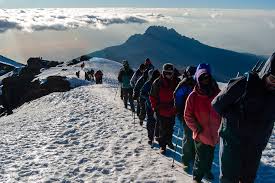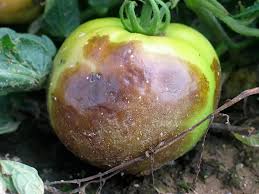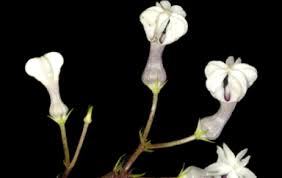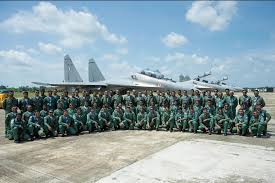Today’s Current Affairs: 12th August 2024 for UPSC IAS exams, State PSC exams, SSC CGL, State SSC, RRB, Railways, Banking Exam & IBPS, etc
Table of Contents
Book Launch Spotlight: ’75 Great Revolutionaries of India’:
Rajya Sabha Deputy Chairman Harivansh Narayan Singh attended the launch of ’75 Great Revolutionaries of India,’ a book by MP Bhim Singh. Singh praised the work for highlighting lesser-known freedom fighters.
T.V. Somanathan Appointed as New Cabinet Secretary:
Senior IAS Officer T.V. Somanathan has been appointed as the new Cabinet Secretary of India, succeeding Rajiv Gauba, whose term ends this month. Somanathan will begin his two-year tenure on August 30, 2024.
India-New Zealand Sign Bilateral Customs Cooperation Agreement:
India and New Zealand have signed a Bilateral Customs Cooperation Arrangement to facilitate easier trade between the two nations. The agreement was formalized in Wellington on 8 August 2024 during President Droupadi Murmu’s official visit to New Zealand
Former Foreign Minister Natwar Singh Passes Away
Former External Affairs Minister Natwar Singh passed away at 95, due to a prolonged illness on August 10. He took his last breath at Medanta Hospital in Gurugram near Delhi, where he was admitted for the past couple of weeks.
SAMEER Transfers Microwave Sugar Measurement Tech to Private Firms:
The Society for Applied Microwave Electronics Engineering & Research (SAMEER), an R&D institute under the Ministry of Electronics and Information Technology (MeitY), has signed a Transfer of Technology (ToT) agreement with Toshniwal Hyvac Pvt. Ltd. and Sir Automation Industries.
Omkareshwar Floating Solar Project:

Madhya Pradesh has commissioned the largest floating solar project in central and north India, generating 90 MW at Omkareshwar.
- Omkareshwar Floating Solar Project is located at Omkareshwar in District Khandwa, Madhya Pradesh.
- The floating power plant was developed on the backwaters of Omkareshwar dam (it is a gravity dam on the Narmada River).
- It is the biggest solar park in India and the largest floating solar project in central and north India, generating 90 MW of energy.
- This project was developed under the Union Ministry of Renewable Energy.
- The project is executed by SJVN Green Energy Limited (SGEL), a wholly owned subsidiary of SJVN, a joint venture between the Government of India and the Government of Himachal Pradesh.
- Project Cost: 646 crores
- It is projected to generate 196.5 million units of electricity in its initial year of operation and a cumulative 4,629.3 million units over 25 years.
- On commissioning, it will reduce 2.3 lakh tons of carbon emissions and will significantly contribute to the Government of India’s mission of net zero carbon emissions by 2070.
Tantalum : List Of 24 Minerals

The Central Government recently notified a list of 24 minerals, including Tantalum, in Part D of the First Schedule of the Mines and Minerals (Development and Regulation) Act (MMDR) Act, 1957, as Critical and Strategic minerals.
- Tantalum is a rare metal with the symbol Ta and atomic number 73.
- Raw tantalum rarely occurs in nature. Instead, it is typically found in the ore columbite-tantalite (usually referred to as coltan).
- Major Producers: Democratic Republic of the Congo, Rwanda, Brazil and Nigeria.
- It is Classified as a transition metal, Tantalum is a solid at room temperature.
- It is a shiny, silvery metal which is soft when it is pure.
- It is almost immune to chemical attacks at temperatures below 150 degrees Celsius.
- Tantalum is virtually resistant to corrosion due to an oxide film on its surface.
- When pure, tantalum is ductile, meaning it can be stretched, pulled, or drawn into a thin wire or thread without breaking.
- It belongs to a class of metals known as refractory metals, which are defined by their strong resistance to heat and wear.
- It has an extremely high melting point, exceeded only by tungsten and rhenium.
- It is most prominently used in the electronic sector.
- The capacitors made from tantalum are capable of storing more electricity in smaller sizes without much leakage than any other type of capacitor.
Mount Kilimanjaro : Climbers

A team of climbers from the Himalayan Mountaineering Institute (HMI) in Darjeeling scaled Uhuru Peak, the highest peak of Mt. Kilimanjaro in Tanzania, recently.
- Mount Kilimanjaro is Africa’s tallest mountain and the world’s largest free-standing mountain(which means not part of a mountain range).
- It is located in northeastern Tanzania, near the Kenya border.
- It extends approximately east-west for 50 miles (80 km).
- Also called a stratovolcano, Kilimanjaro is made up of three cones: Kibo, Mawenzi, and Shira.
- Kibo is the tallest of the three volcanic formations, which is also a dormant volcano, while the other two are extinct volcanoes.
- Uhuru Peak, the highest free-standing peak in Africa, is located on the volcanic cone Kibo.
- Kilimanjaro is also known for its snow-capped peak.
- The mountain has five main vegetation zones, from the lowest to the highest point: Lower slopes, montane forest, heath and moorland, alpine desert, and summit.
- The Kilimanjaro National Park was named a United Nations Educational, Scientific, and Cultural Organization (UNESCO) World Heritage Site in 1987.
Fruit Rot Disease:

The Central Plantation Crops Research Institute (CPCRI), Kasaragod, recently issued an advisory to farmers to control ‘kole roga’ (fruit rot disease) in arecanut plantations.
- Fruit Rot Disease is a plant disease that can cause significant losses for farmers, as it can reduce the quality of the crop and make it unmarketable.
- In some cases, fruit rot can also lead to the death of the plant.
- It is caused by a number of different fungi, bacteria, and viruses, and it can be difficult to prevent and treat.
- Continuous heavy rainfall coupled with low temperature (20 to 23 °C), high relative humidity (>90%), and intermittent rain and sunshine hours favour the occurrence of fruit rot.
- Symptoms:
- Brown or black spots on the fruit
- Softening of the fruit
- Shrivelling of the fruit
- Mould growth on the fruit
- Many different types of fungi can cause fruit rot, but the most common type is Botrytis cinerea.
- This fungus affects a wide range of fruits, including grapes, strawberries, tomatoes, and peppers.
- The fungus enters the plant through wounds in the leaves or fruit lesions, and it proliferates in humid conditions.
- Once established, the fruit infections can spread rapidly through the crop, causing rot.
- The fungi that cause fruit rot can also produce toxins that are harmful to humans and animals.
Asceua tertia : New Species

A new species of ground-dwelling spider, Asceua tertia, was recently discovered in the Western Ghats.
- Asceua tertia is a new species of ground-dwelling spider discovered in the Shendurney Wildlife Sanctuary, which forms part of the Western Ghats.
- It is the third species of the genus Asceua to be documented in India, the others being Asceua cingulata (Simon, 1905) and Asceua thrippalurensis (Sankaran, 2023).
- This genus belongs to the ant-eating spider family Zodariidae and is distinguished by its small size, laterally compressed bulbs, well-developed cymbial folds, long and convoluted copulatory ducts, and dual femoral glands.
- The size ranges from 2.54 mm in males to 3.2 mm in females.
- The males of the species have a yellow-brown prosoma with creamy white to yellow-brown leg and palp segments featuring broad brown patches and narrow longitudinal stripes.
- The abdomen displays three pairs of narrow, creamy white stripes arranged obliquely, a white dot near the rear, and numerous tiny creamy white spots on the sides.
- The females have a dark brown prosoma and a wide, oval abdomen with four pairs of creamy white stripes, along with small anterior and broad posterior creamy white patches on the sides.
Great Barrier Reef : Study

Water temperatures in and around Australia’s Great Barrier Reef have risen to their warmest in 400 years over the past decade, according to a new study.
- Great Barrier Reef is a complex of coral reefs, shoals and islets in the Pacific Ocean.
- It is located off the northeastern coast of Australiain the Coral Sea.
- It is the longest and largest reef complex in the world. It is the largest living structure on Earth.
- It extends in roughly a northwest-southeast directionfor more than 2,300 km, at an offshore distance ranging from 16 to 160 km, and its width ranges from 60 to 250 km.
- It has an area of some 350,000 square km.
- The reef, which is large enough to be visible from space, is made up of nearly 3,000 individual reefs and over 900 islands.
- UNESCO declared the Great Barrier Reef a World Heritage Sitein 1981.
- Much of the Great Barrier Reef is a marine protected area, managed by the Great Barrier Reef Marine Park Authority of Australia.
- It is estimated that the reef is home to around 2000 species of fish and around 600 different coral species.
Ceropegia Shivrayiana:

A new flowering plant species from ‘ceropegia’ genus has been discovered inside the Vishalgad premises in Maharashtra and named it as Ceropegia Shivrayiana.
- Ceropegia Shivrayiana is a flowering plant species named in a nod to Chhatrapati Shivaji Maharaj.
- The plant was discovered on one of his renowned forts, Vishalgad.
- It consists of unique, tubular flowers, which are specially adapted to attract moths for pollination.
- This plant thrives in rocky terrains and is capable of growing in less nutrient-or poor soils.
- It belongs to the Asclepiadaceae family, which includes many medicinal plants, with significant ecological importance.
- Its conservation is essential due to the ongoing threat of habitat loss.
Vishalgad Fort
- It is an ancient fort situated at Vishalgad village in Kolhapur district of Maharashtra.
- Also called Khelna or Khilna by the locals, Vishalgad Fort was one of the important forts of the Maratha Empire.
- It was built in the year 1058 by Shilahara king Marsinh and was initially known as Khilgil.
Exercise Udara Shakti:

Indian Air Force and Royal Malaysian Air Force participated in Exercise Udara Shakti 2024.
- Exercise Udara Shakti is the joint air exercise was conducted in collaboration with the Royal Malaysian Air Force (RMAF) at Kuantan, Malaysia.
- It was aimed at bolstering operational efficiency, technical experts of both Air Forces engaged in exchange of their maintenance practices.
- During the exercise, IAF’s Su-30MKI fighter jets engaged in air combat missions alongside the RMAF’s Su-30MKM fighters, enabling the crew of both air forces to familiarize with each other’s operational protocols, thereby enhancing interoperability, commonality and overall effectiveness in Su-30 aircraft operations.
- The Sukhoi Su-30MKI is a multirole combat fighter aircraft.
- It is jointly developed by the Sukhoi Design Bureau and Hindustan Aeronautics Limited (HAL) for the Indian Air Force (IAF).
- Based on the Su-30 fighter aircraft, Su-30MKI is equipped with thrust vectoring control and canards.
Nankai Trough:

Japan’s meteorological agency said the likelihood of strong shaking and large tsunamis is higher than normal on the Nankai Trough.
- Nankai Trough is a “subduction zone” between two tectonic plates in the Pacific Ocean, where massive earthquakes have hit in the past.
- This underwater subduction zone (nearly 900 km long) is where the Eurasian Plate collides with the Philippine Sea Plate, pushing the latter under the former and into the Earth’s mantle.
- It runs from Shizuoka, west of Tokyo, to the southern tip of Kyushu Island.
- It has been the site of destructive quakes of magnitude eight or nine every century or two.
- These so-called “megathrust quakes”, which often occur in pairs, have been known to unleash dangerous tsunamis along Japan’s southern coast.
- Subduction Zone is a spot where two of the planet’s tectonic plates collideand one dives, or subducts, beneath the other.
- Tectonic plates are pieces of the Earth’s rigid outer layer that slowly move across the planet’s surface over millions of years.
- This is the main tenet of plate tectonics, the theory that portions of Earth’s shell glide over the lower mantle, taking continents with them.
- Subduction zones occur in a horseshoe shape around the edge of the Pacific Ocean, offshore of the USA, Canada, Russia, Japan, and Indonesia, and down to New Zealand and the southern edge of South America called the “Ring of Fire”.
- These subduction zones comprise “the most seismically and volcanically active zone in the world,”, responsible for more than 80% of the world’s biggest earthquakes and most of the planet’s active volcanoes.




